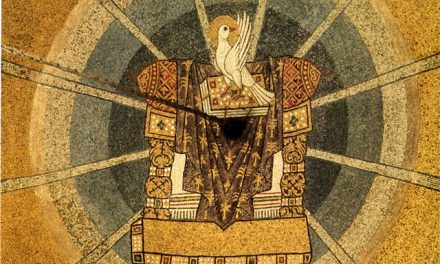Lectionary 42
Acts 10:34a, 37-43
Ps 118:1-2, 16-17, 22-23
Col 3:1-4
Jn 20:1-9
Lent is finally over and now in the Church we feast. And yet we should be changed by our Lenten practices of prayer, fasting, and almsgiving. We should go on from Easter a little more prayerful, a little more temperate, and a little more charitable.
For Christians, the death and resurrection of Jesus Christ has normative significance. The promise of resurrection ought to lead to a change in our basic attitudes, dispositions, and behaviors that reflects the hope that we have that this earthly life is not the end. This is what Paul is getting to in our second reading from Colossians when he says,
If then you were raised with Christ, seek what is above,
where Christ is seated at the right hand of God.
Think of what is above, not of what is on earth.
For you have died, and your life is hidden with Christ in God.
When Christ your life appears,
then you too will appear with him in glory.
Just how is the resurrection transformative? First of all, the resurrection is transformative on the level of our experience of fear, suffering, and death. Allen Verhey in his recent book on the Ars Moriendi argues that when faced with death, Christians ought not to “pray for a miracle” because the miracle, Christ’s defeat of death, has already occurred. This is not to say that Christians should stop thinking that death is an evil, but through the lens of the resurrection, the Christian is able to face death well, with courage, with patience, and most of all, with hope.
The resurrection is also transformative on the level of justice. The temptation in our world today is apathy. We are surrounded by so many evils both here and abroad and the solutions seems so elusive. In my class on modern Catholic social teaching, we have just discussed liberation theology and revolution. Many of the students are uncomfortable with violent revolution as a response to injustice but they struggle to find an alternative (that is, an alternative that doesn’t tell the poor to just be content with their lot). The resurrection compels us to enter into solidarity with our poor brethren, to make their struggles our struggles, and to bear the marks of their persecution on our bodies. The resurrection, in other words, demands that we become martyrs–witnesses–to the hope that God’s reign will eventually triumph. This is what Peter tells us in the first reading characterized Jesus’ life:
He went about doing good
and healing all those oppressed by the devil,
for God was with him.
Saints like Oscar Romero, Dietrich Bonhoeffer, and Martin Luther King Jr. are models of the pursuit of justice framed by the resurrection. Jon Sobrino writes on this point “Jesus’ resurrection is thus transformed into good news, whose central content is that once and for all justice has triumphed over injustice, the victim over the executioner.”
Finally, the resurrection allows us to live with true joy. “This is the day the Lord has made,” the Psalmist cries. “Let us rejoice and be glad in it.” Jesus has triumphed! We know the end of the story. And now we can rejoice.
I love the rhythm of feasting and fasting in the Church. I love that “thinking of what is above” doesn’t mean being glum or uptight all the time. In the Christian life, there really is a place for eating, drinking, and making merry.
Easter is indeed a time to rejoice but it is also a time to continue shaping our character as we did throughout lent according to our resurrection hope. Alleluia!




Trackbacks/Pingbacks